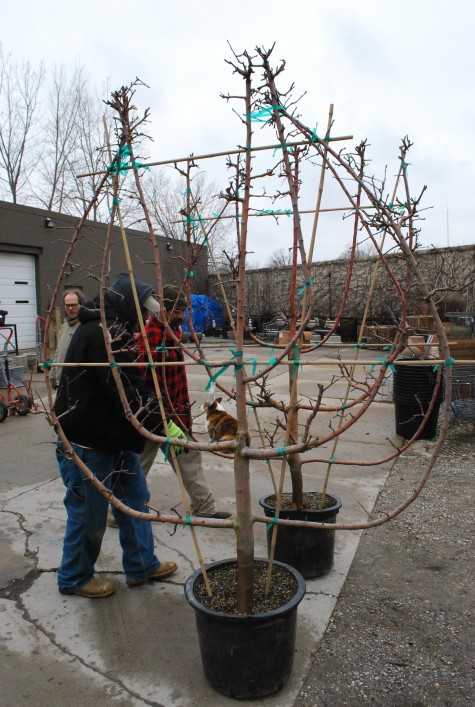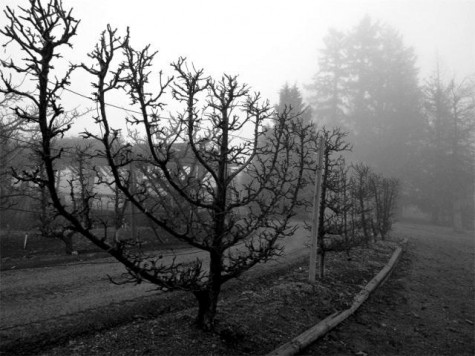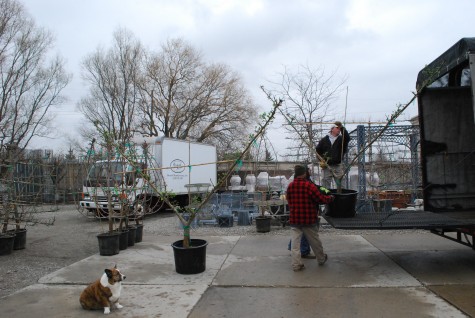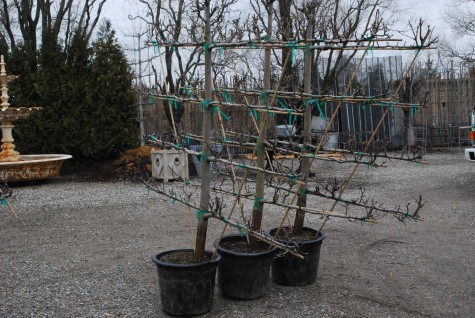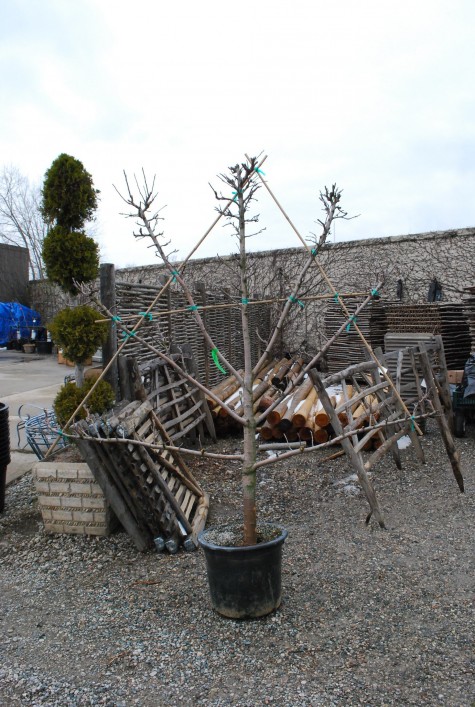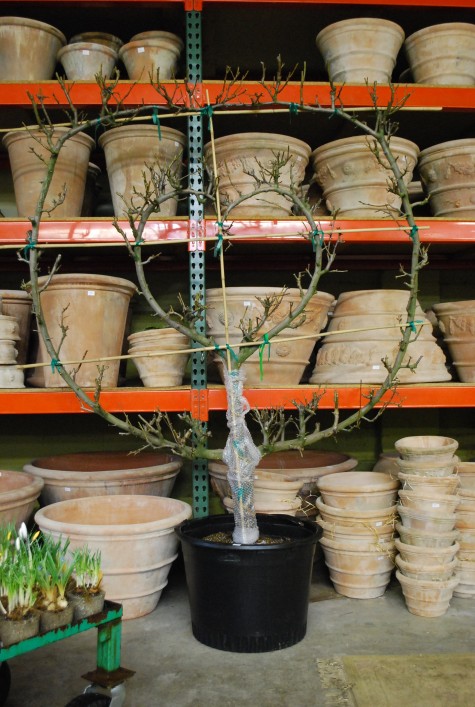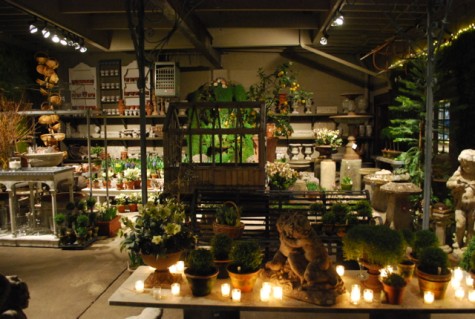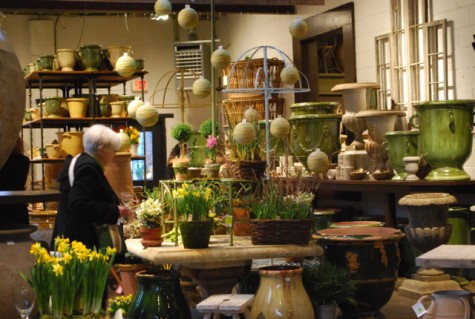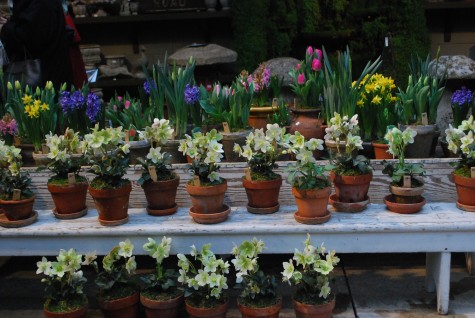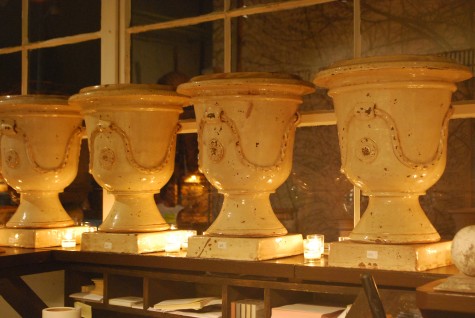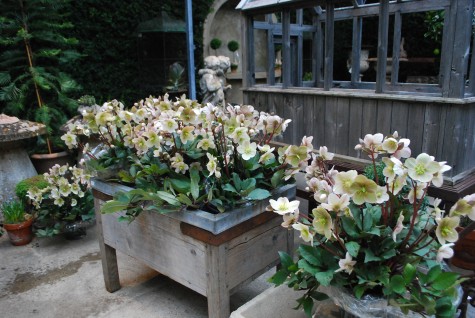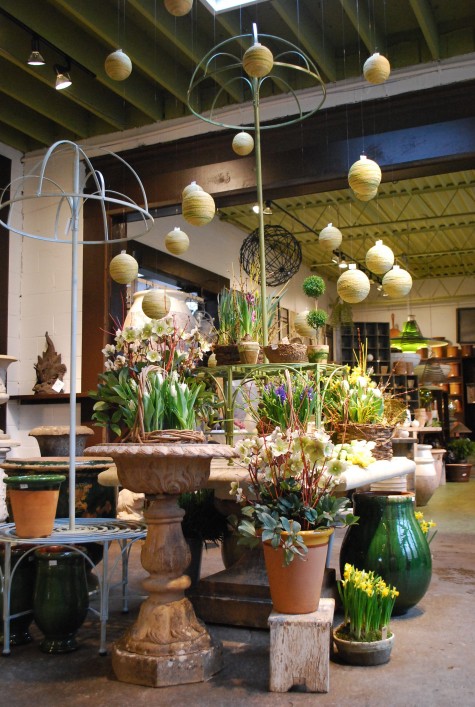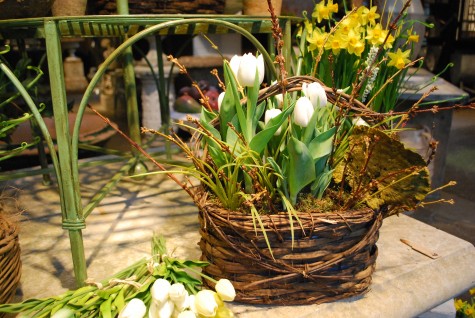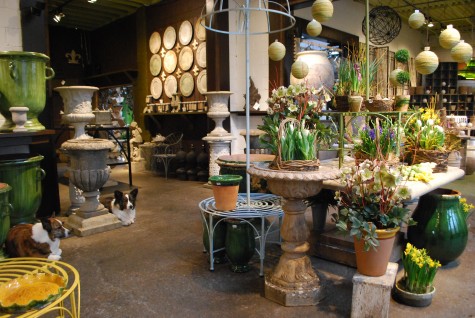What would spring be without some fabulous plants on order? The garden shop is a garden shop-not a full service nursery. We have neither the space nor the inclination for that. But I do like to carry specialty landscape plants, plants of distinction, and great plants for containers. My love for espaliers dates back to the mid 80’s. If you shopped with or had a landscape designed and planted by Al Goldner, chances are an espalier was part of that relationship. He grew these specially trained and pruned fruit trees on his farm in Howell-it was next to impossible to find them available for sale, save for Henry Leuthart’s place. Billy drove these to us himself-typical. The care he gives his trees is a full time and then some job.
I buy them every year from a number of places, but this grower is my favorite. He was formally trained in the propagation of fruit trees trained to grow in but two dimensions, as it has been done in France for centuries. He sells no trees before their time. The trunk sizes are substantial, and the primary arms are set and properly grown into their intended shape. You can see in this picture that each tree is planted at the side of the pot-not in the middle. This makes easy work of planting the tree close to a supporting wall. This classical shape is know as a goblet-that should be clear. This tree is older and perfectly grown. The planting and bolting to a wall will be easy.
This old goblet espalier at one time had a supporting framework to hold its arms in place, but now is old enough and sturdy enough to stand alone. Planted at the UBC Botanic garden, this tree is a living fence of beautiful design and form. The history of espaliers is firmly rooted in a French agricultural tradition. Fruit trees trained in two dimensions took up very little room in the garden; severely pruned trees produced huge yields of fruit. Though most of my fruit comes from the grocery store, I find these pruned trees enchantingly beautiful.
We unloaded 10 espaliers, all part of a free standing fence which will run 60 feet. At a young age, a single stem crabapple whip was summarily topped. A pair of shoots emerging at just the right angle on either side of that wound would be trained to grow out, producing the bottom half of a very large vertical diamond shape. This method of growing and pruning multiple trees to create a whole is known as a Belgian fence.
Each tree will be planted exactly 6 feet from its neighbor. You can get the idea of those large vertical diamonds that will be created by this arrangement of trees in this picture. I have seen Belgian fence done on a smaller scale. The smaller the scale, the more difficult it is to keep the diamond shapes clean and crisp. This fence will bloom with white flowers in May, and produce gold fruit in the fall. The form will be so striking in winter. Pruning is somewhat a matter of personal preference. Some gardeners would like their primary branches small and delicate-they prune shoots off the main trunk hard. Another gardener might permit small branches off the main trunks to grow such that the diamond shapes are thick and substantial. Is this discussion not so clear?
This picture makes the idea easier to see. This Belgian fence has smaller diamond shapes. This look is created by planting the individual trees closer together. I cannot really explain why the idea of having 10 trees that when planted together will form a wall with a continuous and geometric pattern appeals to me so much, but suffice it to say it took me all of 30 seconds to speak for these 10 trees.
Four quadruple cordon espaliers were delivered-a pair of apples, and a pair of pears. Cordon refers to the main arms of the espaliers being trained in the horizontal dimension. The vertical distance between each arm is equidistant. This form is common in the pruning of grapes, as well as fruit trees. Branches growing in the horizontal dimension bear heavily. This applies to grapes, apples, pears-and roses. A long cane of a climbing rose attached in the horizontal dimension will bloom to beat the band.
This drawing from Southern Living illustrates the cordon shape. Of course few real trees have long arms that are as obligingly horizontal as this drawing would suggest-but this illustrates the ideal. Branches and fruiting spurs off the main arms are kept closely clipped. There is work to growing an espalier-but it is easy and satisfying work. An espalier is a specialty landscape plant. It is entirely friendly in even a small garden. These trees are grafted onto dwarf rootstock. They produce fruit. The few hours spent pruning them feels good.
An espalier trained as a fan has arms that radiate in every direction from the central truck. Those arms can be grown long on a big wall, or kept short in a confined space. The bamboo stakes you see attached to this tree-travel stakes. Every branch of every tree was firmly secured with bamboo stakes, to prevent any damage during shipping. Though these trees are fairly old, they still rely on a physical support system to keep their shape intact. Very long branches growing at wide angles are subject to damage, if they are not properly supported.
We have installed horizontal wires and bolts on some of the walls at the shop so we can display our espaliers. The 3 bamboo stakes from the shipping phase have been left on, and will not be removed until the tree has been planted, and installed. The process of giving an espalier a home involves bolts and ties into the supporting wall, or fence posts and wires for a free standing espalier.
There is no classical precedent for this espalier shape. It is entirely the invention of our grower. A lively living sculpture such as this makes me want to grow espaliers from scratch. Ours are old and established trees, but yes, they can be grown by any gardener from a single whip available from any number of fruit tree sources in the spring. I was 35 when I saw my first espalier at Al Goldner’s farm-I still remember that day. It feels good, carrying on, making these very special trees available years later. This tree I call the wild at heart espalier.

My latest heart espalier is my 4th-I do not keep them for long. This one, planted and successfully hardy in this large steel box for 4 years now, is happy, and grows vigorously. This picture I took moments before its yearly haircut. Wild at heart-yes! A yearly haircut is not so much to ask in the way of care. The pleasure? Every day. Every season. Year after year.

